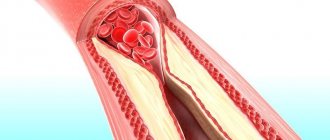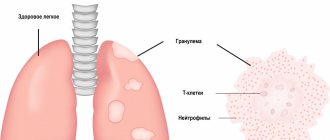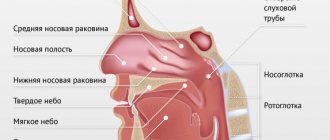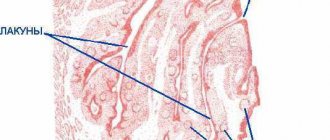Published: 10/19/2021 13:10:00 Updated: 10/19/2021
Heart disease is deformation and pathological changes in the structure of valves, septa and chamber walls, which lead to improper functioning of the organ and disruption of intracardiac hemodynamics.
The disease can be congenital or acquired. The chance of transmitting congenital heart disease from mother to child ranges from 3% to 50%. In clinically healthy parents, the risk of having a child with this pathology is 1% [1].
Heart disease is associated with a high risk of intrauterine and child mortality, sudden death in older patients, and also reduces the quality of life and ability to work, leading to disability.
Prevention of the disease includes proper pregnancy planning, a healthy lifestyle, timely diagnosis and treatment of pathology in the early stages. Surgery is considered the most effective therapy.
Classification and causes of heart defects
Based on their origin, there are two main classes of this disease.
Congenital heart disease develops in babies between the third and eighth weeks of pregnancy due to abnormal formation of the organ. Such pathologies can cause spontaneous abortions or stillbirth. In addition, risk factors include:
- on the part of the parents: alcohol or drug addiction, genetic predisposition;
- on the mother’s side: poor nutrition, previous infections (syphilis, measles, rubella), taking certain medications, metabolic disorders (obesity, diabetes, phenylketonuria), chronic diseases (damages of the respiratory and cardiovascular systems), poor environment, working in hazardous production.
Acquired heart defects develop throughout life.
They are caused by functional and structural changes in the organ due to infectious lesions, inflammatory and autoimmune processes in its tissues. An excessive load on the chambers of the heart is also considered a provoking factor, for example, when one chamber is forced to pump blood through a narrowed aorta, when an additional volume of blood enters the chamber from another chamber when the hole between them is not fused or when the valve is insufficient. Based on the location of the defect, they are distinguished:
- for congenital heart disease: atrial septal defect, ventricular septal defect, patent ductus arteriosus, narrowing of the aorta and tetralogy of Fallot;
- with acquired heart disease: atherosclerotic, syphilitic, rheumatic forms or pathology caused by endocarditis, sepsis, autoimmune reactions, etc.
Based on the severity of hemodynamic disturbances inside the heart, a distinction is made between moderate and severe pathology or defect without affecting the movement of blood within the organ.
According to the general assessment of hemodynamics, heart defects are compensated, subcompensated or decompensated.
Based on the number of affected valves, multivalve (tricuspid or mitral) or combined heart disease (involving both valves and/or the aorta) is distinguished.
Clinical picture of the development of PPS
PPS is otherwise called valve defects: in these diseases, it is the heart valves that are affected. The reasons for their development are infections, inflammation, autoimmune processes, overload of the heart chambers.
Let us briefly consider the classification of these diseases.
By localization:
- Monovalve - only one valve is affected.
- Combined - more than one valve is affected: two-valve, three-valve.
According to the functional form:
- Heart disease: what is it, how long do people live with heart disease?
- Simple – stenosis or insufficiency.
- Combined - combine several simple defects on several valves.
- Combined - stenosis and insufficiency of only one of the valves.
Due to the development (etiology), diseases are rheumatic (up to 30-50% of all mitral stenoses are consequences of rheumatism), atherosclerotic, caused by bacterial endocarditis, syphilis (syphilitic heart disease is included in the list of rare cardiopathologies) and other diseases.
If the defects are minimally expressed, they do not appear clinically. In the stages of decompensation, hemodynamic disturbances appear, which are characterized by shortness of breath during physical activity, bluish skin, swelling, tachycardia, cough, and chest pain.
Let's take a closer look at the symptoms of acquired heart defects: how do they manifest themselves?
Mitral valve insufficiency and stenosis
In the stage of compensation for mitral regurgitation, people do not feel problems , but as the condition worsens, shortness of breath (first during physical activity, then at rest), palpitations, dry cough, and chest pain (in the area of the heart) may occur. Later, swelling of the lower extremities and pain in the right hypochondrium appear.
During examination, doctors reveal cyanosis of the skin and swelling of the veins in the neck. When listening, a weakening or absence of the first tone and systolic murmur are noticed. There are no characteristic changes in pulse and blood pressure.
With mitral stenosis, new complaints are added to the above . A person who suddenly stands up may develop cardiac asthma. The cough is dry, there may be some sputum, and hemoptysis occurs. The voice becomes hoarse, and increased fatigue occurs. Often, against the background of heart pain and tachycardia, arrhythmia begins - interruptions in rhythm.
What will the doctor see? On pale skin, a sharply defined bluish “blush” appears - a triangle from the tip of the nose to the lips. During auscultation, you can hear the so-called three-part “quail rhythm”, protodiastolic and presystolic murmur. Hypotension is possible (pressure tends to decrease), pulse varies depending on the location of measurement.
Aortic stenosis and insufficiency
Aortic stenosis occurs without symptoms for a long time; the first complaints begin when the valve opening narrows to more than 2/3 of the normal state . These are pains of a compressive nature in the chest during physical activity, fainting, dizziness.
- Aortic heart defects: causes, diagnosis and treatment
Later, cardiac asthma, shortness of breath at rest, fatigue and weakness may develop. Further development causes swelling of the legs and pain in the hypochondrium on the right.
The doctor will also see external signs of the defect: pale or blue discoloration of the skin, swelling of the neck veins. Pay attention to systolic trembling a la a cat's purr, weakening of the first and second tones, systolic murmur, which increases in a lying position on the right side if you hold your breath while exhaling.
Pulse rare, weak. Systolic pressure is low, diastolic pressure is normal or increased.
With aortic insufficiency, there are practically no complaints during compensation; sometimes tachycardia and pulsation behind the sternum are observed . In the stage of decompensation, angina pain in the chest occurs, for which nitroglycerin does not help well, and standard symptoms: dizziness, fainting, shortness of breath (first with exertion, then at rest), swelling, a feeling of heaviness or pain on the right under the ribs.
The examination reveals pallor, pulsation of the peripheral arteries, rhythmic changes in skin color under the nails and on the lips with light pressure, and possible head shaking synchronous with the pulse. On auscultation, organic and functional noises will be heard; listening to the femoral artery will show a double Traube tone and a double Vinogradov-Durozier murmur.
The pulse is accelerated and high. Systolic and pulse pressure increase, diastolic decreases.
Symptoms of heart disease
With a minor violation, the symptoms of the disease do not appear for a long time.
If hemodynamics are seriously impaired, shortness of breath, bluish skin, swelling, pain in the heart, rapid heartbeat, causeless cough, increased fatigue, decreased ability to work, dizziness and fainting, high or low blood pressure are observed. Auscultation also reveals a heart murmur. In newborns, heart disease is manifested by the appearance of cyanosis during breastfeeding, cold extremities and the tip of the nose, poor weight gain, and developmental delays.
Heart valves and their defects
The heart has four chambers: two atria and two ventricles. From the atria, blood enters the ventricles, and then through the valves, with the help of contractions of the heart muscle, enters the arteries. Valves ensure blood flow in the desired direction and quantity. If they close or do not open completely, this prevents normal blood circulation.
As a result, the heart gradually increases in volume and stretches, compensating for blood deficiency and working under constant overload. Exhaustive work of the heart can cause the development of serious cardiovascular diseases, such as arrhythmia or heart failure. In addition, heart valve defects can cause complications due to certain ongoing infectious diseases.
Most often, heart defects are diagnosed in patients over sixty years of age. The reason is that with age, the valves of the valve apparatus lose their elasticity, and the heart increases in size. As a result, blood flow decreases and it unevenly fills the cavities of the heart - heart failure develops.
There are four types of heart valves, and each has a specific function:
- Aortic : prevents blood from flowing from the aorta into the left ventricle of the heart.
- Mitral : prevents the flow of blood from the left ventricle of the heart into the left atrium at the moment when the heart muscle contracts and blood is pushed into the vessels.
- Pulmonary : Prevents the flow of blood from the pulmonary artery into the right ventricle of the heart.
- Tricuspid : valve between the right ventricle of the heart and the right atrium.
If the valves are enlarged, narrowed, loose or torn, it becomes difficult for them to close, and blood flows back with each contraction of the heart. As a result, the heart experiences enormous stress and eventually loses its performance.
Depending on the form of the disease, heart valve defects can manifest as:
- stenosis – narrowing of the lumen (opening) of the vessels through which blood flows. This significantly increases the load on the heart, as it makes it more difficult for blood to be pumped out.
- insufficiency - damage to the heart valve leaflets, resulting in their inability to close completely. In such cases, the blood flows back.
- a combination of stenosis and insufficiency - the affected valves form an obstacle to the passage of blood. In this case, some of the blood passes through the hole, but returns back into the next phase of the cardiac cycle.
Diagnosis of heart defects
The doctor may suspect the disease during the initial examination based on external signs such as bluish or pale skin, shortness of breath at rest.
On auscultation, a characteristic heart murmur or rhythm disturbances are heard. Using palpation, the doctor identifies swelling, pulsation of veins, and the borders of the liver. Light and heart sounds are heard percussion, and the boundaries of the heart are determined. It is important to collect anamnesis: patient complaints (for children - symptoms observed by parents), chronic, hereditary and past infectious diseases.
To confirm and clarify the diagnosis, additional examinations are carried out.
Laboratory diagnosis of heart disease includes a general blood test (leukoformula, hematocrit), urine analysis according to Nechiporenko. Instrumental methods include electrocardiogram, 24-hour Holter monitoring, cardiac ultrasound, chest x-ray, MRI of the heart and large vessels, and ECHO-CG.
For those planning pregnancy and pregnant women, it is recommended to undergo a special set of examinations:
- complete blood count, blood group and Rh factor, antibodies to Rh factor;
- cytological examination of smears from the cervix and cervical canal;
- test for TORCH infections (toxoplasmosis, rubella, cytomegalovirus infection, herpetic infection);
- to exclude renal failure: biochemical blood test (creatinine, urea, potassium, calcium, phosphorus, triglycerides, alkaline phosphatase, cholesterol, glucose), ultrasound of the pelvic organs, CT and MRI of the abdominal organs;
- pregnancy-associated plasma protein test;
- molecular study of the number of X chromosomes;
- genetic test to determine polymorphisms associated with the risk of developing arterial hypertension (hypertension) in the blood.
How do heart valve diseases manifest?
Most often, patient complaints are nonspecific: shortness of breath, rapid pulse, arrhythmia, fatigue, cyanosis, dizziness.
The severity and nature of symptoms depend on the location of the affected valve. With valve defects of the left half of the heart (mitral and aortic), the lungs are primarily affected, because Blood stagnates in their vessels, which manifests itself as shortness of breath. There are also signs of insufficient blood supply to all organs and systems, primarily the brain and the heart itself. Dizziness, fainting, and angina occur. If the functioning of the valves of the right half of the heart (tricuspid and pulmonary valves) is disrupted, blood stagnates in the vessels of the systemic circulation, i.e. all organs except the lungs are affected. Swelling of the legs and feet, ascites (fluid in the abdominal cavity), enlargement of the liver, etc. develop (LIVER INCREASES, ETC.).
Heart valve defects are dangerous due to their complications and impact on the body, so the main prevention of pathological conditions is regular examinations and treatment of diseases leading to the formation of valve defects.
Treatment of heart disease
With congenital pathology, the diagnosis is usually known even before birth.
Only surgical treatment aimed at completely eliminating the cause is considered effective. The sooner an operation to correct a heart defect is performed, the greater the chance that the defect will not affect the child’s development, and the lower the risk of postoperative complications. If such intervention is not possible, then the child is prescribed a special regimen of physical activity and nutrition. The treatment tactics for an acquired disease require an integrated approach. In this subgroup of patients, medication (symptomatic) treatment, diet therapy, and lifestyle correction are first used. If there is no effect, worsening symptoms or risk of complications, surgery is prescribed.
There are several types of surgical intervention for heart defects:
- bypass (creating a new path for blood flow bypassing the affected area of the vessel);
- endoprosthetics (replacement of the affected valve with a prosthesis);
- separation (valvuloplasty) and dissection (valvotomy) of the valve leaflets.
Prevention
The risk of heart disease can be reduced through timely treatment of diseases caused by streptococci - pharyngitis, sore throat. They are the most common causes of the development of rheumatism. If you already have this disease, then you must take a course of bicillin prophylaxis. It must be prescribed by a competent doctor.
If a person has been diagnosed with mitral valve prolapse or has already suffered from rheumatism, then for the purpose of prevention it is necessary to start taking antibiotics prescribed by a doctor for a certain time before medical interventions. These “interventions” include removal of tonsils, teeth, adenoids and other surgical operations.
The ABC-Medicine clinic provides complete diagnosis and treatment of heart defects of various forms. If you are concerned about the listed symptoms, be sure to sign up for an examination. Highly qualified specialists will individually prescribe treatment for the disease.
Prognosis for heart disease
Given the seriousness of the disease, the question of how long patients with heart disease live and how to increase their life expectancy arises.
According to statistics, 25% of children with congenital pathology die in early infancy and another 50% in the first year of life. Without treatment, about 10% of children survive into adolescence. Thanks to modern technologies, up to 80% of people with congenital heart disease live into middle age [2].
With valvular heart disease, there is a high percentage of sudden death, so the timeliness of surgical treatment in this subgroup of patients plays a decisive role.
Acquired pathology can manifest itself at a later age. Life expectancy in this case depends on the patient’s general health, physical endurance, individual characteristics, living and working conditions.
Causes
Acquired heart pathology occurs due to:
- infective endocarditis;
- syphilis;
- atherosclerosis;
- rheumatism;
- injuries of various types.
The causes of most cases of congenital heart defects are not fully diagnosed by doctors. These diseases can be caused by exposure to radiation in a pregnant woman. Viral and other infections suffered by a woman in the first trimester of pregnancy (hepatitis B, rubella, influenza) are dangerous. Taking drugs, alcohol and certain medications during pregnancy can also cause congenital diseases.
Prevention and recommendations for heart defects
Congenital heart disease can be prevented only through a comprehensive assessment of the health status of parents when planning pregnancy, adherence to a nutritious diet and proper conditions for the pregnant woman.
Prevention of acquired heart disease consists of timely and complete cure of the underlying disease that caused the pathology. General recommendations include following a cardiotrophic diet, quitting smoking and alcohol, moderate physical activity, avoiding colds and infectious diseases, and undergoing regular examinations by a cardiologist.
Nursing process
Nursing process for heart defects plays a big role in improving the patient’s quality of life. This process has the following goals:
- Improving the patient’s quality of life to an acceptable level.
- Minimizing emerging problems.
- Helping the patient and his family adapt to the disease.
- Support of the patient's basic needs or their complete restoration.
For heart defects, this process is carried out in several stages. In the first step, the nurse must determine the basic needs of the patient. The second stage consists of making a nursing diagnosis and identifying the patient’s main problems, among which the following should be highlighted:
- Physiological. This group includes all complications of the main diagnosis.
- Psychological. Anxiety regarding changes in quality of life, as well as fear of worsening the prognosis of the disease. This also includes a lack of knowledge and skills in general health care.
- Security issues. Attention should be paid to the increased risk of infection, misuse of prescribed medications, and the risk of falls if fainting occurs.
The third stage is to determine the goals that the nurse should set for herself in order to alleviate the general condition of the patient. The fourth stage includes the implementation of all nursing interventions that need to be carried out according to the protocol for the treatment and diagnosis of the defect. The last stage, an assessment of how effectively nursing care was provided, is carried out not only by the nurse, but also by her immediate superiors, as well as by the patient himself.









